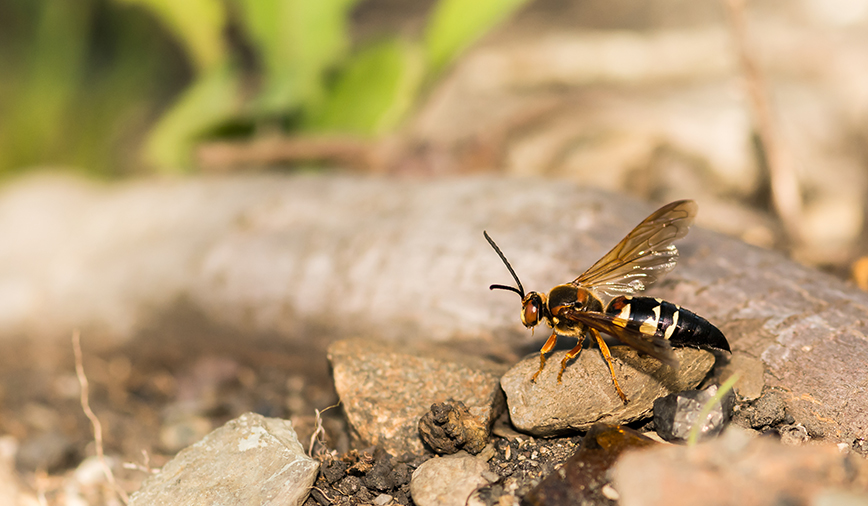1
Pam’s Perspective
From the…
Pam Otto is the Manager of Natural Programs and
Interpretive Services for the St. Charles Park District
August 10, 2012
I don’t know if there’s any other group of animals that provides as much excitement, milligram for
milligram, as the Class Insecta.
Think about it. Even though they’re small—the biggest one in the world weighs 7100 milligrams, about
the same as a Grade A large egg—these guys can be found, in one form or another, on every continent,
including Antarctica. According to some estimates, if you were to put all the insects in the world in one
giant bug jar (making sure, of course, to punch holes in the lid) you’d end up with about 10 quintillion—
that’s 10,000,000,000,000,000,000—individual critters. And that’s not even counting all the non-Insecta
beasties like spiders, centipedes and roly polies.
So it should come as no surprise that the animal that’s been causing quite a buzz, literally, the last
couple of weeks is an insect. A big insect. A killer insect.
The eastern cicada killer, to be exact.
Also known as Sphecius speciosus, this giant
wasp is turning out to be the No. 1 insect
people are curious about in the summer of
2012, outranking even Japanese beetles in
number of calls we’ve received.
Favoring areas with exposed sand or soil (patios
and ballfields) that is easy to dig in (gardens and
golf course sand traps) with an abundance of
cicadas (pretty much everywhere, this time of
year), the cicada killer is quite at home in and
around the TriCities. No big deal, right?
Well, did I happen to mention that cicada killers
2
measure about 2 in. in length? Or that the swollen abdomens of the females can be nearly as big around
as a pinky finger? Or that a group of males, hell-bent on defending territories, conduct buzzing, aerial
dogfights that sound like a squadron of small fighter planes?
Those qualities, coupled with the fact that cicada killers are indeed wasps, and so in theory can sting,
have sent more than a few folks scrambling for their insect field guides these past few weeks.
The good news, for humans, is that cicada killers barely even register on the scale of potential threats.
They look scary, for sure, but unless you’re really harassing them, they are quite happy to go about their
business and leave you to go about yours.
It’s cicadas they’re after. True to their name, these wasps kill cicadas. But not directly.
The sting of the cicada killer females (males are not so gifted) delivers a venom with paralytic and
preservative properties that causes cicadas—the only things the stings are really meant for—to become
immobile. Once her large quarry is rendered powerless, momma cicada killer flies and/or drags her prize
back to her home burrow. Down under the ground they
go, to the series of chambers mom has already dug in
anticipation of a successful hunt.
After placing a cicada in a chamber, the ever-industrious
wasp then lays an egg on the still living but no longer
moving insect, which soon becomes food for the
developing larva. Eggs destined to become male wasps
get one cicada; eggs that are to be females get two or
three to provide for their eventual bigger body mass.
Male or female, the little ones feast on their all-they-can-eat buffet, consuming the cicada(s) within
about two weeks. Larger, but not yet resembling their extraordinary parents, the larvae then enter a
state of diapause in which they spend the winter. Next spring they will pupate, and emerge as fullfledged
wasps in summer.
Males will appear first and duke it out to establish territories; females will follow a couple weeks later.
Right now we are about mid-way through the cicada killer season. Reports of males buzzing have started
to slow down, while calls about mysterious thumb-sized burrows are just beginning.
Even though the danger to people is minimal, finding yourself in the same general area as a cicada killer
may be a bit unnerving. Just remember, those giant black and yellow cylinders buzzing about aren’t the
least bit interested in you. Because milligram for milligram, you’re just not that exciting…to a cicada
killer.
Pam Otto is the manager of nature programs and interpretive services for the St. Charles Park District.
She can be reached at 630-513-4346 or potto@stcparks.org.

